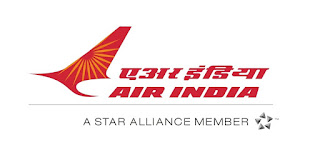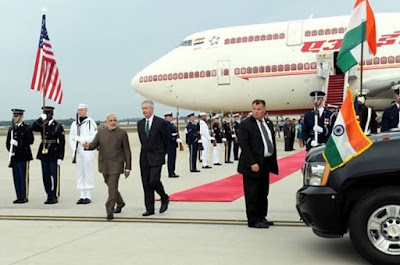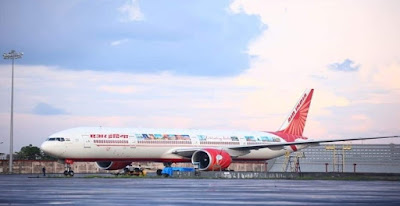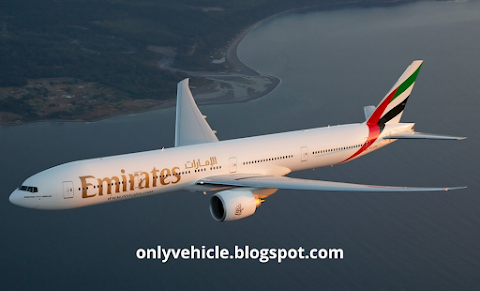Development of Air Transport in India
Air transport has always fascinated people everywhere. It is also one of the quickest ways to travel anywhere. Air transport is still quite unbelievable. It has evolved significantly from the past. Airplanes nowadays can carry about 500 passengers in a single trip to about 8,000 nautical miles. It also played a major role in connecting India to the rest of the world. We will see the birth and growth of aviation in India.
Air India celebrating its first
747 delivery
Birth of aviation in India
Aviation was introduced in India by the French and the British. Early flights in India were only for the transportation of mail and package services. Air services for people were not present in those times. Two decades later, J. R. D. Tata founded India's first airline. He was the pioneer of aviation in India. He is credited and responsible for creating the first airline of India. He was also the first commercial pilot license holder in India. This airline grew to become Air India today.
J. R. D Tata's pilot license
Airlines in India
These are the major passenger airlines in India.
- Air India
- Vistara
- SpiceJet
- GoAir
- IndiGo
- Jet Airways
- AirAsia India
Air India
Air India is the only national airline in India. It is a member of the Star Alliance partnership. It has its headquarters at New Delhi. Its hub is at Indira Gandhi International Airport, New Delhi. Air India started as Tata Air Services, founded by J. R. D. Tata. This service only transported mail to different locations across India. Later, it was renamed as Tata Airlines. Tata Airlines, then owned only six-seater airplanes which helped to carry passengers. After independence in 1947, Tata Airlines was renamed Air India.
In 1948, the government bought about 49% of Air India. The entry into the jet-age saw a huge growth in Air India. Indian Airlines also merged with Air India in 2011. The airline bought its first Boeing 707 aircraft named 'Gauri Shankar'. The airline also bought Airbus a310's, a Boeing 747, a Boeing 777, and Lockheed aircraft.
The airline currently operates a fleet of Boeing 777s, Boeing 787s, 2 Boeing 747s, Boeing 737's, and the Airbus a320 family.
Regional aircraft operated by Air India are ATR-72s and ATR-40s.
Air India One carrying the Prime Minister of India
Air India ATR-72
Factors that led to the growth of aviation in India
- Necessities of the British: The British needed means to transport their goods and mail to different regions.
- Demand of the people: The people in India wanted travel facilities to go to the foreign countries for education.
- Culture of India: A lot of foreigners wanted to visit India because of its unique culture. They were attracted by India's ways and also wanted to live here.
- Cargo: A lot of products from India were of high demand in foreign countries. This led to the development of cargo operations from India and beyond.
- Work purposes: People in India often travelled frequently to foreign countries for work purposes. Having an airline operating routes to these places came in handy to these people.
Routes from India to other countries
Most private airlines in India are low cost carriers operating only domestic flights. Air India is the major airline which operates International routes. Air India operates to international destinations currently as shown in the following:
1. United States
2. United Kingdom
3. United Arab Emirates
4. Thailand
5. Sri Lanka
6. South Korea
7. Singapore
8. Saudi Arabia
9. Russia
10. Qatar
11. Oman
12. Nigeria
13. Netherlands
14. Nepal
15. Myanmar
16. Kuwait
17. Kenya
18. Japan
19. Italy
20. Israel
21. Iraq
22. Hong King
23. Germany
24. France
25. China
26. Canada
27. Bangladesh
28. Bahrain
29. Australia
30. Afghanistan
Other International routes are remaining suspended or terminated due to the pandemic.
Significance of aviation in India
The aviation industry in India is constantly growing. It has helped many individuals to connect from India to the rest of the world. It helped in the transport of passengers and cargo all across the world. The introduction of large airliners helped to reduce the cost of flying significantly. It also helped to develop tourism in India. Airlines from other countries also operate flights to India. India stands out today as having the third largest share in the aviation market.
Air India Boeing 777 - 'Celebrating India' Livery
Best Development Needs For Flight:
There square measure an over sized number of doable mixtures, it is an effort to add up the most varieties, and to explain the result they have on the most carry constant, on the angle of the most airfoil once most carry is obtained, why they improve the carry, what effects they need on the drag, however they have an effect on the pitching moment, and so on.
From this figure it'll be seen that the easier flaps like the camber flap, split flap and single slotted flap provides a good increase in most carry constant at an inexpensive angle of attack of the most airfoil, and thus an inexpensive attitude of the airplane for landing; they conjointly increase drag that is a bonus within the approach and landing.
The additional difficult sorts like the Zap and Fowler flap, and also the double-or treble-slotted flap, provide a good bigger increase in most carry constant, however still at an inexpensive angle of attack; whereas the even additional difficult combinations of slots and flaps provide nevertheless bigger most carry coefficients, however sometimes at larger angles of attack, and of course at the expense of appreciable complication.
Blown and jet flaps square measure in a very category of their own since they rely upon power to supply the processing, and this might be a serious disadvantage within the event of equipment failure.
Verity jet flap isn’t a flap in the least, however merely associate degree effluence of air, or a air stream within the variety of a sheet of air ejected harassed at or close to the edge of the airfoil.
This helps to control the physical phenomenon, and if the sheet of air will be deflected the reaction of the jet will contribute directly to the carry.
The Krueger and alternative kinds of nose flap square measure used primarily for increasing carry for landing and take-off on otherwise high speed aerofoils.
Spoilers, air brakes, dive brakes, carry dumpers and like square measure a special class in this their main purpose is to extend drag, or to destroy carry, or both; what is more, they have not essentially be related to the aerofoils.
They are used for varied functions on differing types of aircraft; to spoil the L/D quantitative relation then steepen the flight angle on high-performance sailplanes and alternative ‘clean’ aircraft; to visualize the speed before turning or manoeuvring; to help each lateral and longitudinal control; to ‘kill’ the carry and supply a fast pull-up when landing; and on extremely high-speed craft to prevent the speed from reaching some vital worth as in a very dive. they'll be thought-about later as acceptable to their various functions.














0 Comments